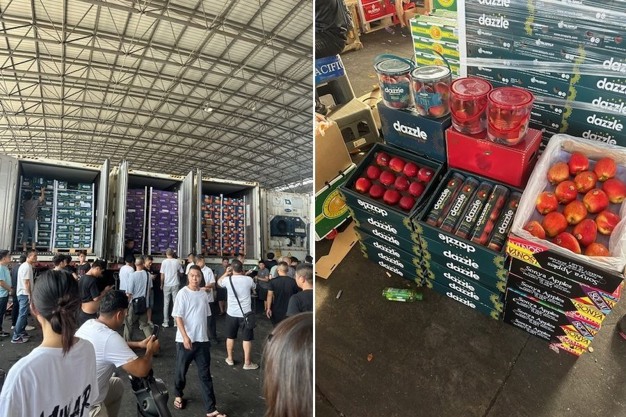The start of the California 2024/25 is surrounded by optimism. New crop lemons from the Coachella Valley and San Joaquin Valley are currently being harvested and shipped. Overall, California lemon volumes are expected to increase over last season. The past few years, global lemon supply has been impacted by oversupply, but California growers are hopeful for a better season compared to recent unprofitable years.
Navels are in the third week of packing and the pace of harvest is increasing each week. "Volume is higher than last year, and crop quality is much improved over last season," says Daniel Kass with The Autenrieth Company. Last season was dominated by large size fruit and this year, both Navels and Cara Cara oranges look to be smaller in size. "It is important to manage harvest properly, to prevent an oversupply of smaller size fruit." Even with smaller sizing, Kass expects production volume to be 10 to 15 percent above last season. Valencia oranges have finished harvest for the season with a good balance of supply and demand.
Seedless mandarins are just starting to get harvested and packed while early season seeded mandarins such as satsumas are also in supply now. Mandarins will also see higher production compared to last season, some of which is due to acreage coming into full production. Mandarins performed well in 2023/24, and there is hope for a repeat performance this season as they are such an important driver of the North American citrus industry.

Hot summer
"The growing season for citrus in general has been fantastic," shares Kass. California had a very hot summer and dry weather as usual. "Although it was one of the hottest summers in memory, the weather provided just enough stress to the trees preventing fruit from growing out of size and boosting sugar levels." At the end of October, the weather finally cooled off and the state is now experiencing classic weather for growing great citrus; warm days, cool nights, and little rain. "The quality on all varieties has benefitted from these ideal growing conditions over the summer and fall." Harvesting conditions are also ideal currently. Rain and fog tend to slow down harvest, but those conditions are usually experienced from December to March.
Strong domestic demand
Post Covid, demand from the domestic market continues to be strong. "For growers, a strong domestic program is critical as we continue to face headwinds in exports markets around the world," comments Kass. A few factors are killing demand for U.S. citrus, including higher pricing and unfavorable exchange rates. Tariffs have also brought U.S. citrus in a disadvantageous position. In addition, the industry has been impacted by a challenging logistics chain and increased global competition to supply the U.S.' traditional Asian markets. China's citrus quality is improving, and the country's increasing volumes of local citrus aren't helping with demand for U.S. citrus either. "While there is a steady demand from higher end consumers who value U.S. citrus, large volumes from the mass market are looking at other options."

Pictures from Guanghzhou Market taken in September. Left: containers with citrus from Australia being unloaded. Right: New Zealand apples and Australia citrus were about the only imported fruit seen in the market.

For more information:
Daniel Kass
The Autenrieth Company
Tel: +1 818-706-0666, ext. 2
[email protected]
www.autenriethco.com
